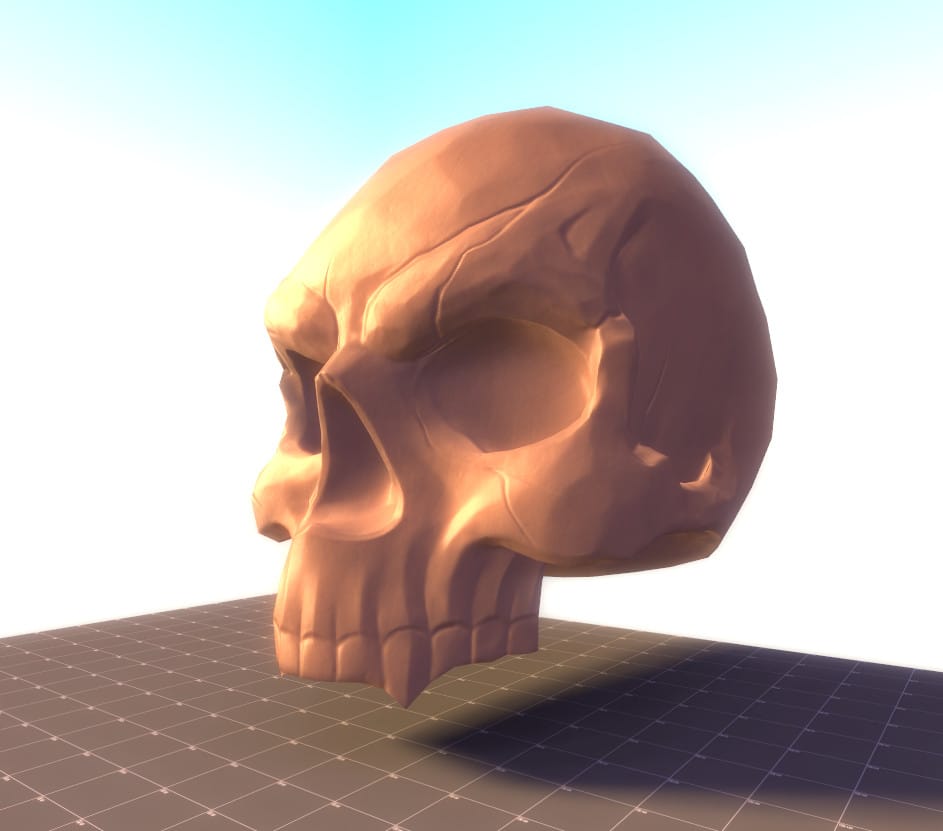
Introduction
Its certainly been a while since I last wrote about any of my work on my site; 7 years to be precise. Rereading the old development posts of CP_Nautilus was like flicking through an old photo album; each memory bringing a strong feeling of nostalgia (but you cringe at the haircuts you thought looked cool). That doesn’t mean I’ve been idly wasted these years, sitting on my hands doing nothing. On the contrary, I had intended to start up numerous development blogs regarding Team Fortress 2 maps I was working on, debriefs of Ludum Dare and GGJ projects I had participated in, rules for boardgame prototypes that cluttered the dining room table in my flat. But, unfortunately, adult life gets in the way. Its been an incredibly busy 7 years with numerous job changes, home moves, literal country moves in the case of the last 2years. The desire to write about my projects, let alone finish them just hasn’t quite been there.
Until now! What I have (like any game designer) is a plethora of unfinished projects that are now ultimately lying on an old HDD in a cupboard somewhere labelled “to finish”. Let’s be realistic, these projects aren’t getting finished. That doesn’t mean they were a waste. I had fun making them and I drew a lot of lessons from the challenges I faced, but I know these projects aren’t getting any more love from me.
What I thought would be fun however, would be go back and document some of these old projects; the context they were made in, my thoughts on them now, as a more experienced and wise developer, and generally just to give them a nice send off. This specific blog will focus on my own solo level design projects, with a separate blog being written up for all the game jams I participated in. So, without further delay, lets dive in.
CP_Nautilus
I’ve written pretty extensively about CP_Nautilus in my previous blog posts. It was my first proper TF2 map, and by far my proudest and most developed project that I’ve worked on in my spare time. It started officially during the month and a half period of unemployment in 2015 that came as a result of the redundancy from my first industry job. I was desperate to get some level design experience and Source provided incredible tools for level designers to work with.
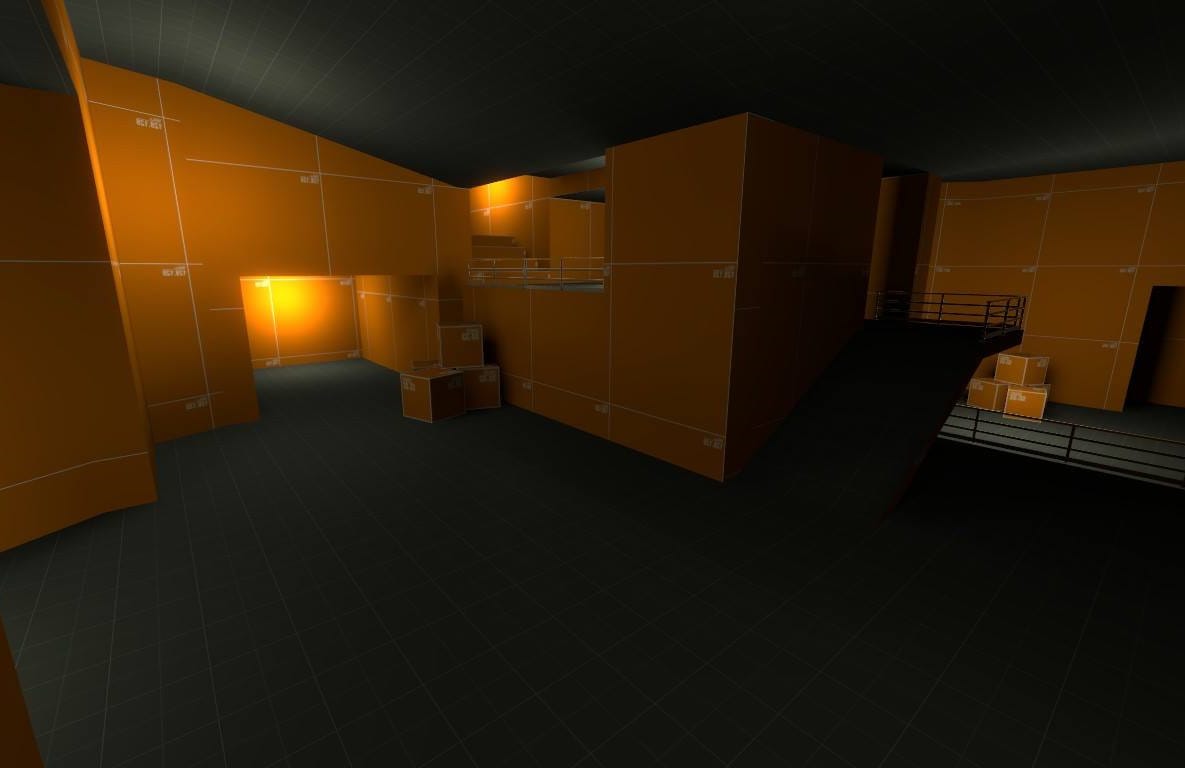
Countless hours of every day in the week, were spent working on this project with no real idea as to what I was actually doing. I was tossing props and brushes into the editor without all that much thought or design, and would then edit until it resembled something that I liked (to be fair, my methods haven’t changed all that much over the years). I remember feeling a real of sense of cabin fever during these long weeks of portfolio work. My only real social contact with another human being being the Starbucks Barista who would consistently write “Grim” on my morning coffee (I still to this day know if this was a genuinely mistake or just a joke I didn’t quite get).

9am – midnight everyday was spent working on the map, but due to a lack of experience, that time was inefficiently used. I spent a lot of time fixing small issues that I would later go on to completely remove. Huge amount of work was wasted after the first iteration of the layout proved too confusing for playtesters and thus needed to be simplified.
I had ambitions that greatly exceeded my skills with the tools, which in principle is a great way to improve, but in practise led to a lot of wasted work in a period where I was desperate for a portfolio piece. Huge lessons were learnt during this period, however the map would ultimately go on hiatus for 3 years after only 1 iteration, as I would get another job in the industry that would eat into my daily hours.
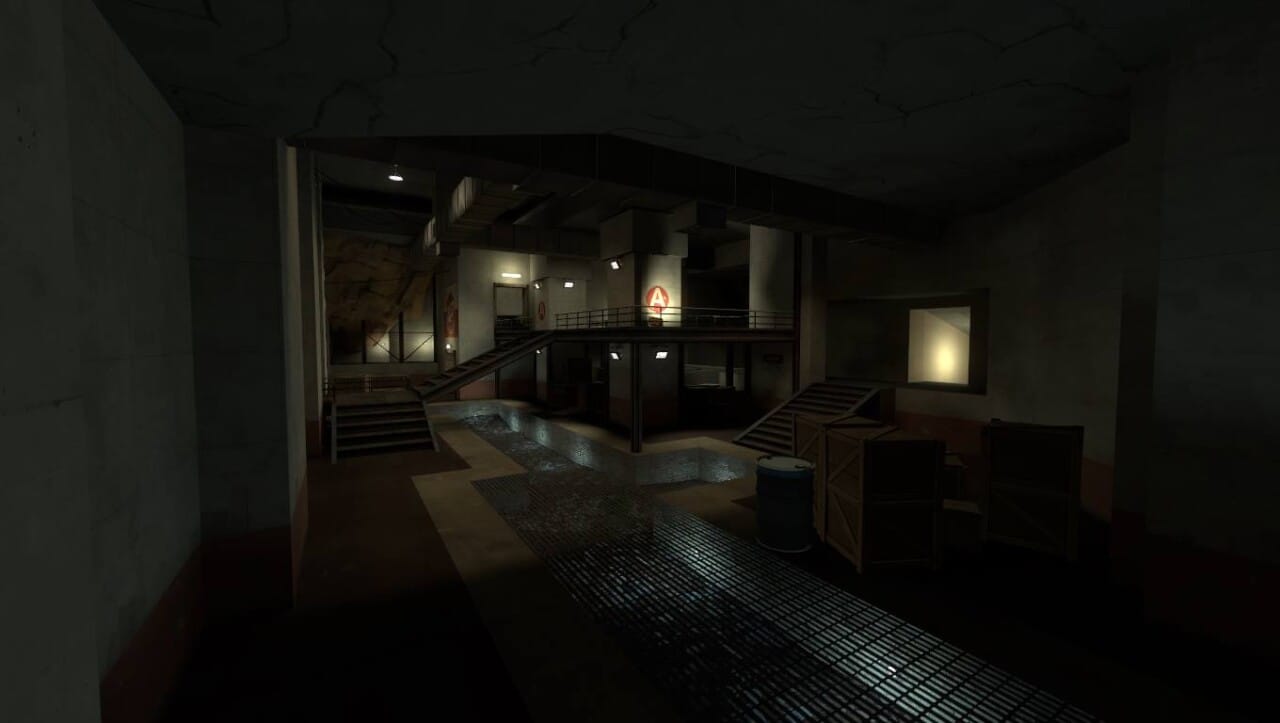
Version 1 was very confusing to navigate and far too detailed in some areas for a greybox that hadn’t been tested
I would return to produce 3 more iterations of the design (documented in blog post a3 and a4). This time, I was far more experienced as a level designer and was more skilled with the Hammer Engine. The design was more refined, the greybox cleaner and I felt like the map was getting into a pretty good state. However I had definitely burnt myself out by the time Version 5 was uploaded to TF2Maps (the website where developers can discuss, host and playtest each other’s maps). I was still working a full time job at a game studio, so all work was being done in the evenings after I had gotten home. The momentum fizzled and ultimately never returned.
The actually VMF file for this map is lost now. In 2021 I build a new computer and stupidly didn’t think to move any files over from my previous HDD. I “think” a copy still exists on my parent’s PC back in my home town. A bit sad to think about how so many hours of work has been lost to the digital void, but some projects are perhaps best left to memory. You can still download the actual BSP file from TF2Maps however and even read the discussion thread. It was actually quite interesting for me to go back to 2015 and read where my thoughts were at the time.
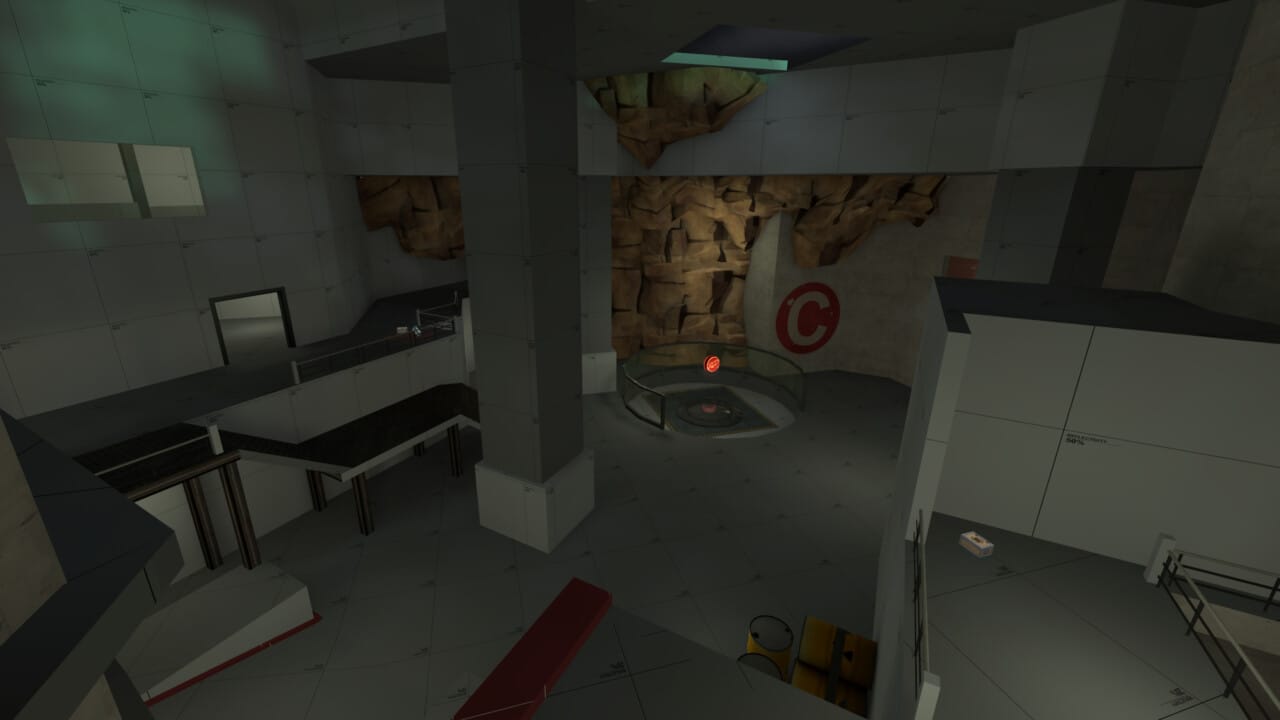

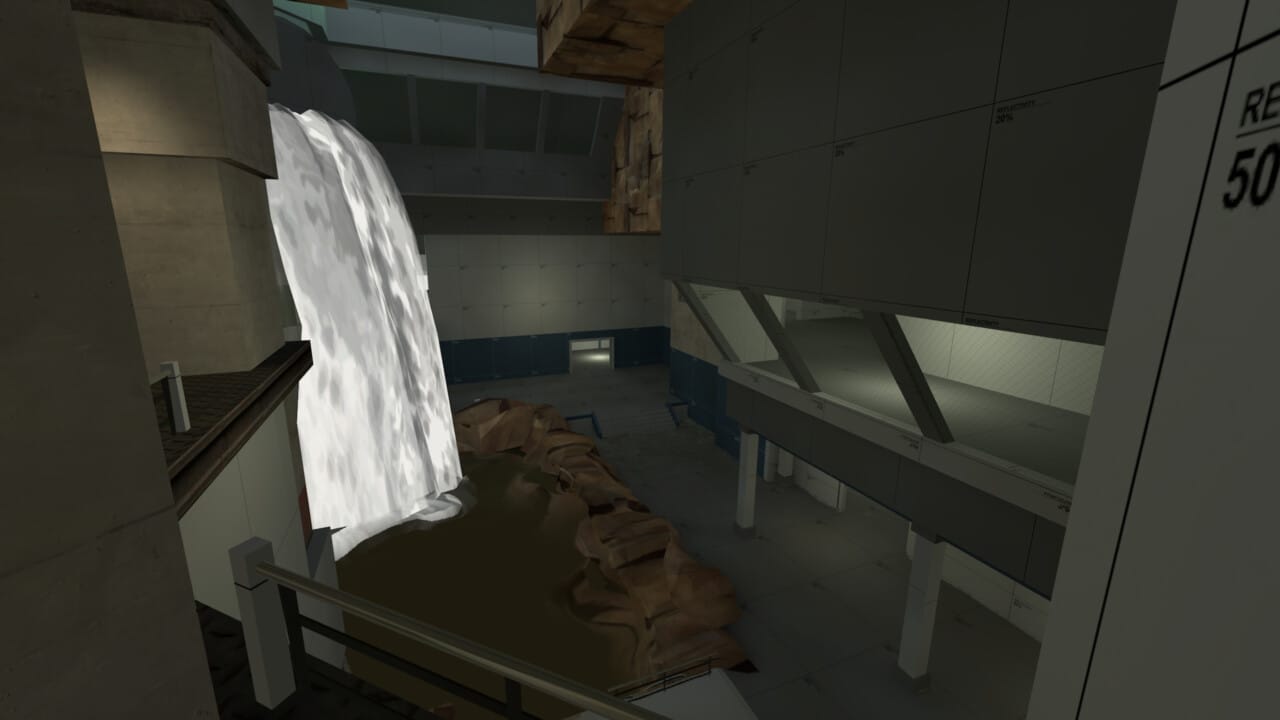
After returning to the map 3 years later, huge areas were re-worked to be cleaner and lighter, as well as addressing a number of the key gameplay issues raised by playtesters
72 Hour Maps
I thought I’d lump the next 3 maps all together into a single post under the title “72 hour maps”. TF2Maps hosts regular 72 hour mapping contents. The idea being that a mapper sits down for a long weekend and works to complete a map over the course of 72 hours (somewhat similar to a game jam). This is a very taxing experience, however one that is incredibly fun.
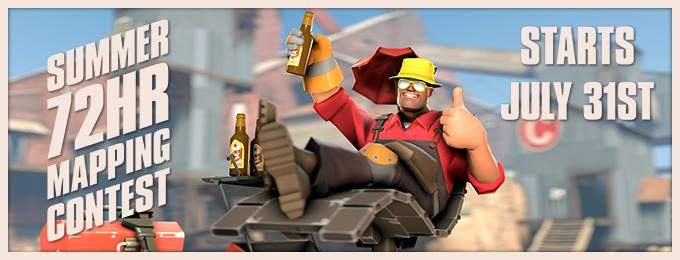
Over that last decade I have participated in 3 of these mapping jams, submitting a map for 2 of them. It’s surprising how much work you can get down by not sleeping and living off a diet of endless coffee, however the experience often left me drained of motivation and so these maps never really got worked on after the jam had ended. If you are a level designer, I highly recommend checking these contests out as they are extremely fun and memorable experiences. And so, in chronological order:
pl_distribution [2015]
This was my first 72 hour jam and was probably the one I had the most fun with. I remember carrying my PC back from my office* on the Friday evening it was due to start, setting it up in the living room of my flat and creating the playlist that was going to keep me company for the next 3 days (*I had recently been hired as a level designer for an indie company in Dundee, but the company was running on a tight budget and lacked the money to provide me a PC so I had to use my own – those are the small little details I fondly remember of my time as a game developer in Dundee).
What I created was… something. This was my first map since finishing my initial work on CP_Nautilus, and I was keen to try out a different game mode. Payload maps are interesting and fun to play but ultimately a level designer must approach them with a different design philosophy from capture point maps.
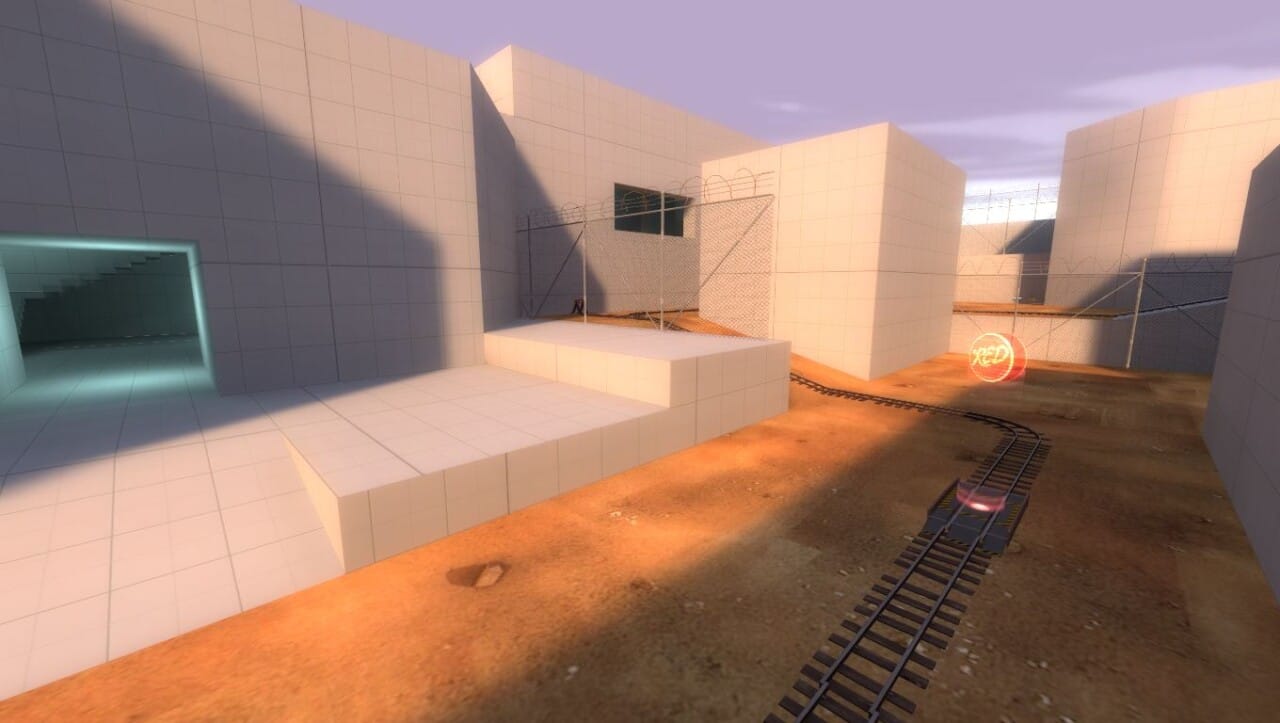
You have a train being pushed along a linear rail so you can almost always predict where the key gameplay is going to take place Not to mention there’s additional logic required just to get the map functioning in the first place. I still remember the relief at 10am on the Saturday morning when the map was finally working and playable.
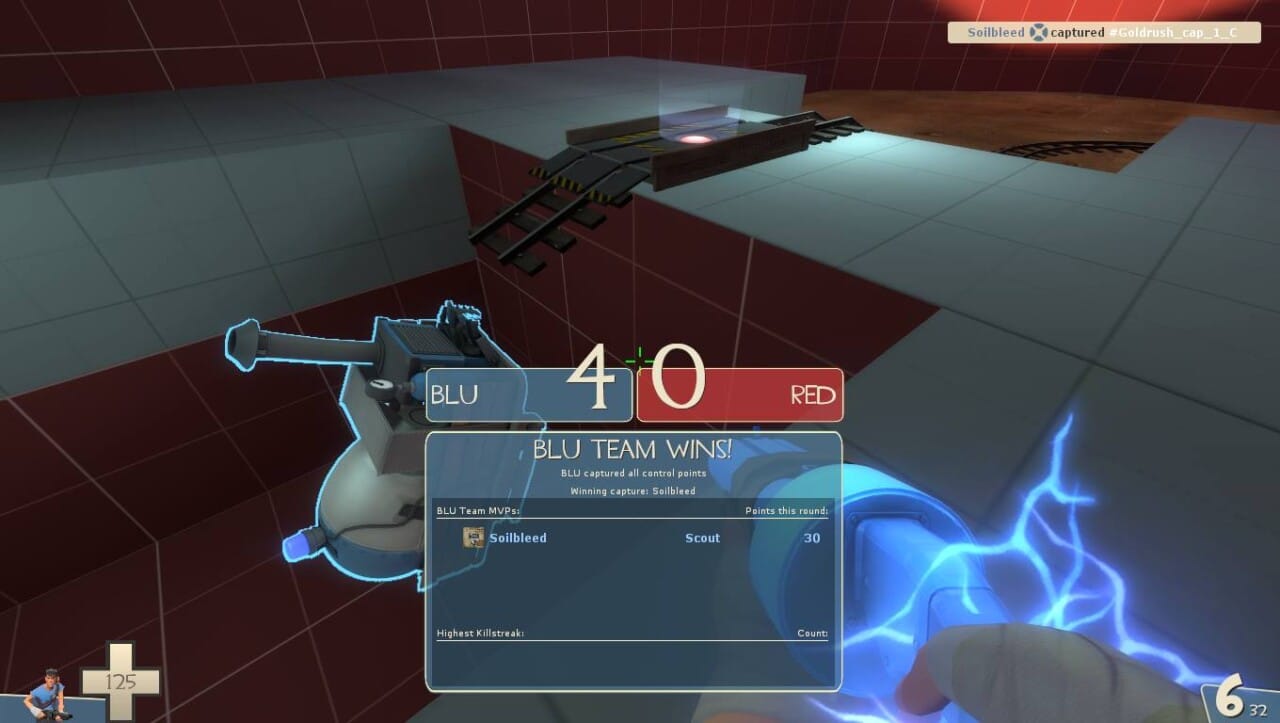
(I even took a screenshot to celebrate the occasion)
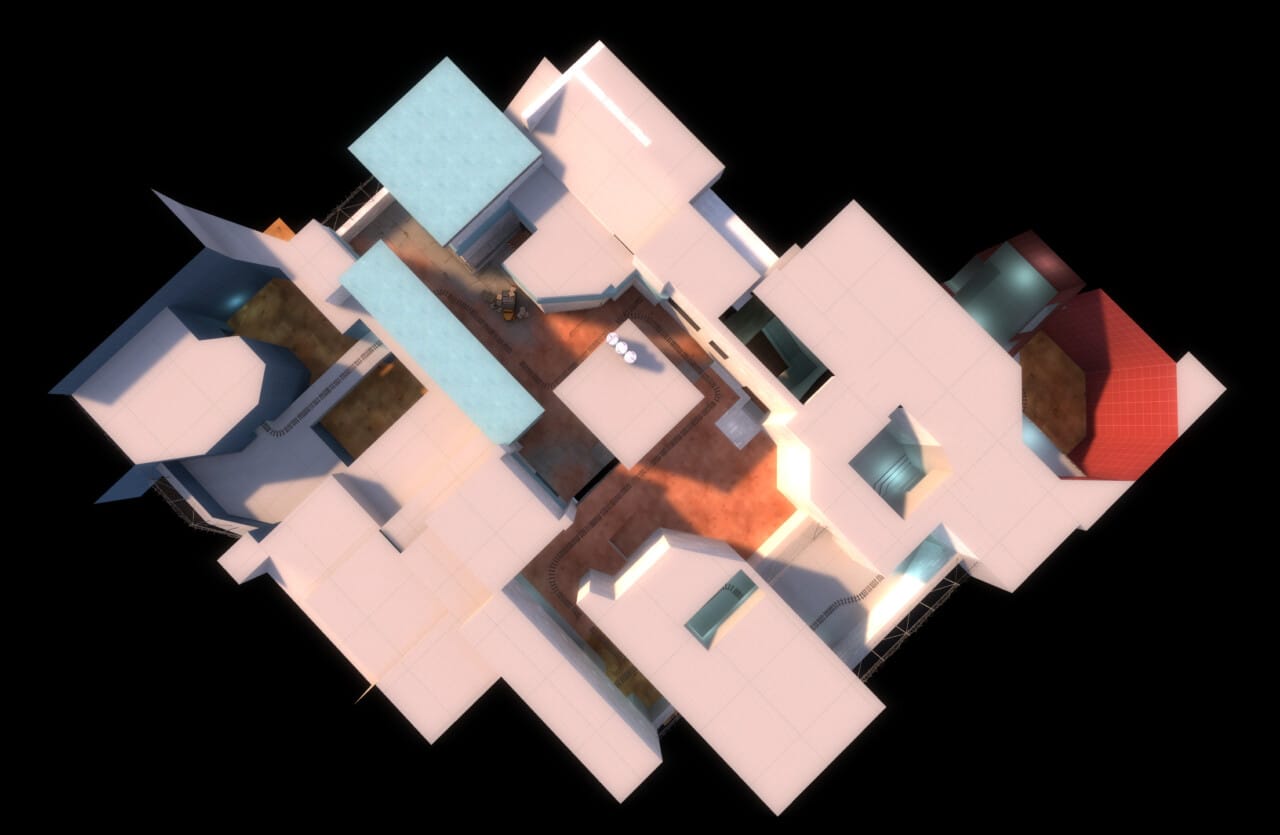
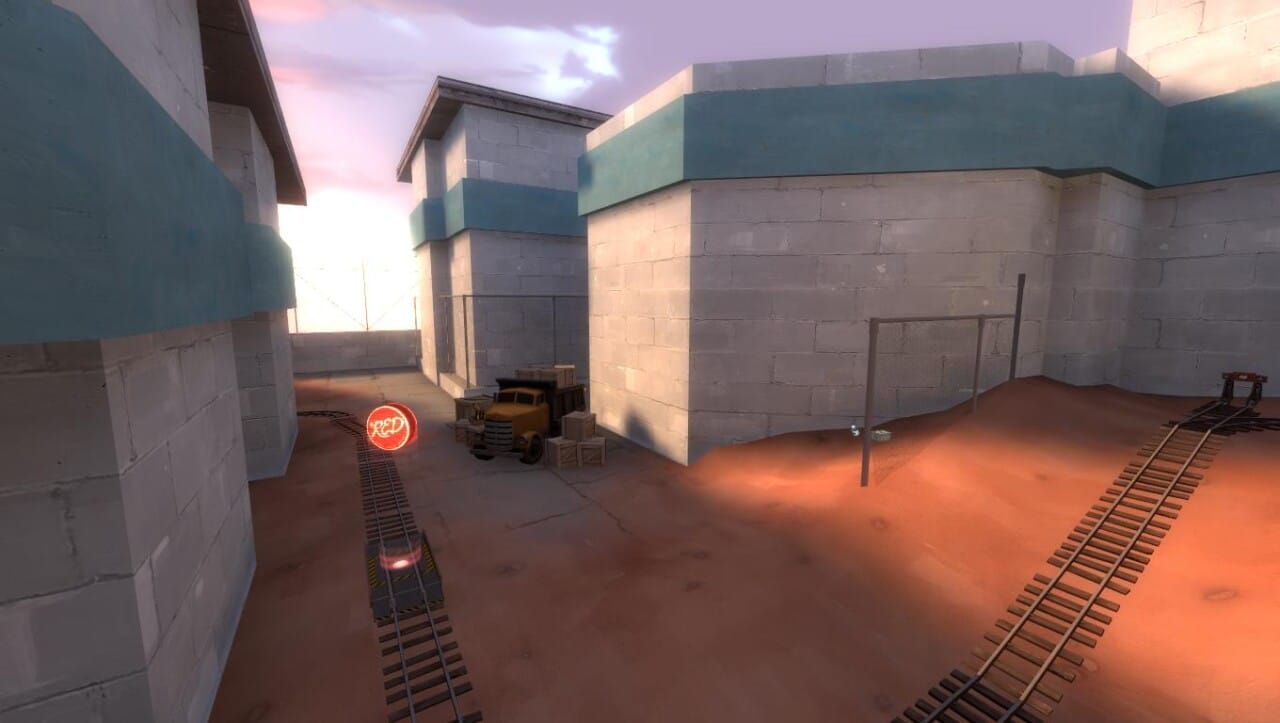
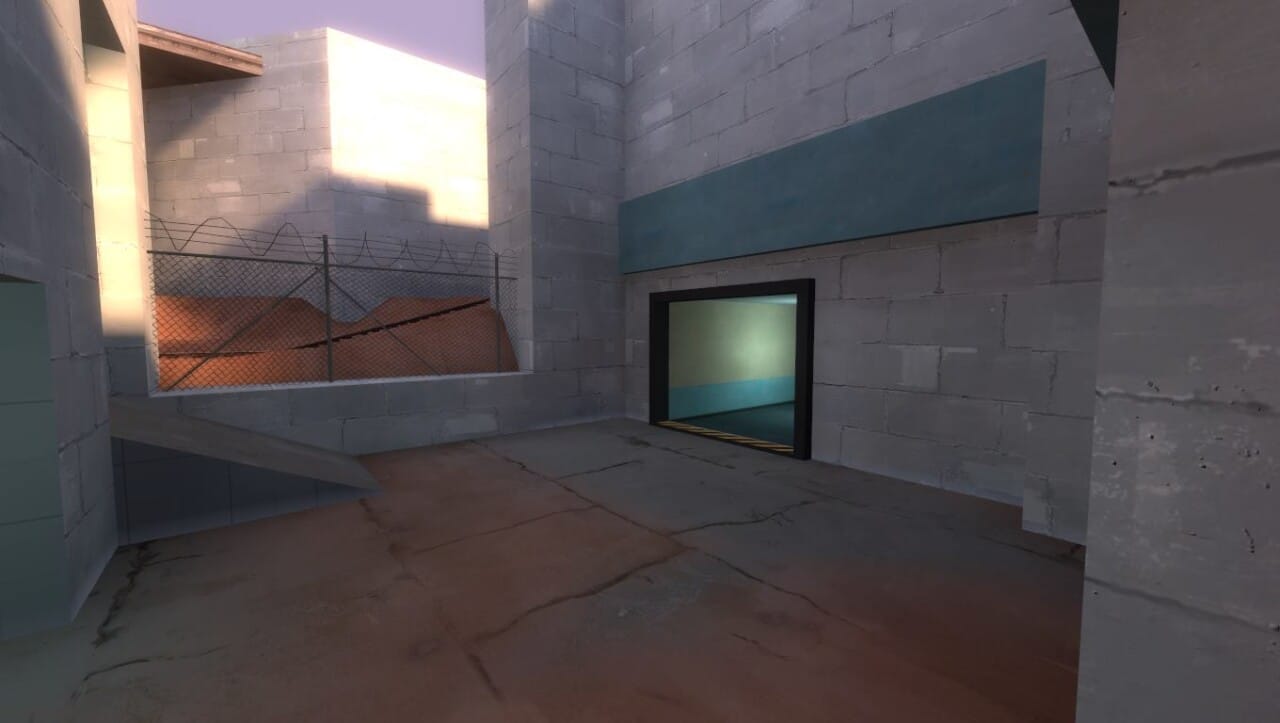
If I was to do it again, I think I’d aim to get a working version of the map playtested quicker (this seems to be a running theme with a lot of my personal projects). Had the issue of scale and pacing (two issues which ultimately would require a lot of work to rectify) been spotted a day earlier, I think I might have had the energy and determination to get them fixed. Still, I thoroughly enjoyed the experience and was proud of myself for actually submitting something, even if it wasn’t my greatest work.
Unfortunately both the VMF and BSP for this map have long since been lost (not even available for download on TF2Maps, which is a shame). I had to dig these images from an old Facebook post from 10 years ago. Maybe one day i’ll stumble across it again and will run around just to see how bad it actually was.
koth_untitled [2017]
My second 72 hour jam event wouldn’t take place for another year and a half, and this one was less successful. I think what didn’t help was they pushed the start time back from 6pm to 11pm, which meant I wasn’t able to quite get the energy from the hype I previously had in 2015 to carry me through the first night. I remember being extremely tired before I had even really begun, and it was only downhill from there.
I can’t even remember all that much, as most of the weekend was a bit of a blur for me. I do recall wanting to make something “alpine themed” and something simpler from the previous attempt in 2015. I settled on a king of the hill game mode set around a broken bridge that had collapsed over a raging river. Clearly I hadn’t got the memo from myself on creating a “simpler design”, as water in Team Fortress 2 has always been an awkward gameplay element to work with (not to mention its implementation within Source is a bit of a pain). I remember spending hours trying to get a flowing water effect to look good, as well as messing around with push entities to force players towards the edge of a waterfall. I’m always in favour of pushing the boundaries on design within games, but I feel a 72 hour mapping contest is perhaps not the best environment to do so.
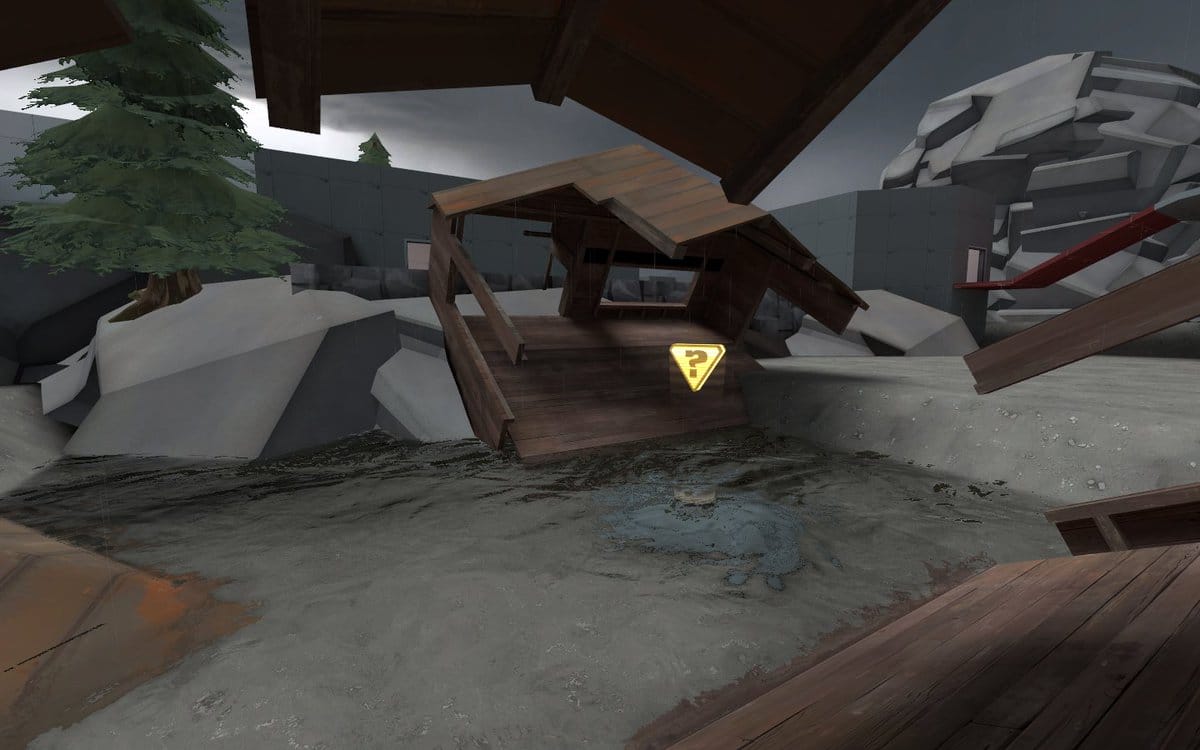
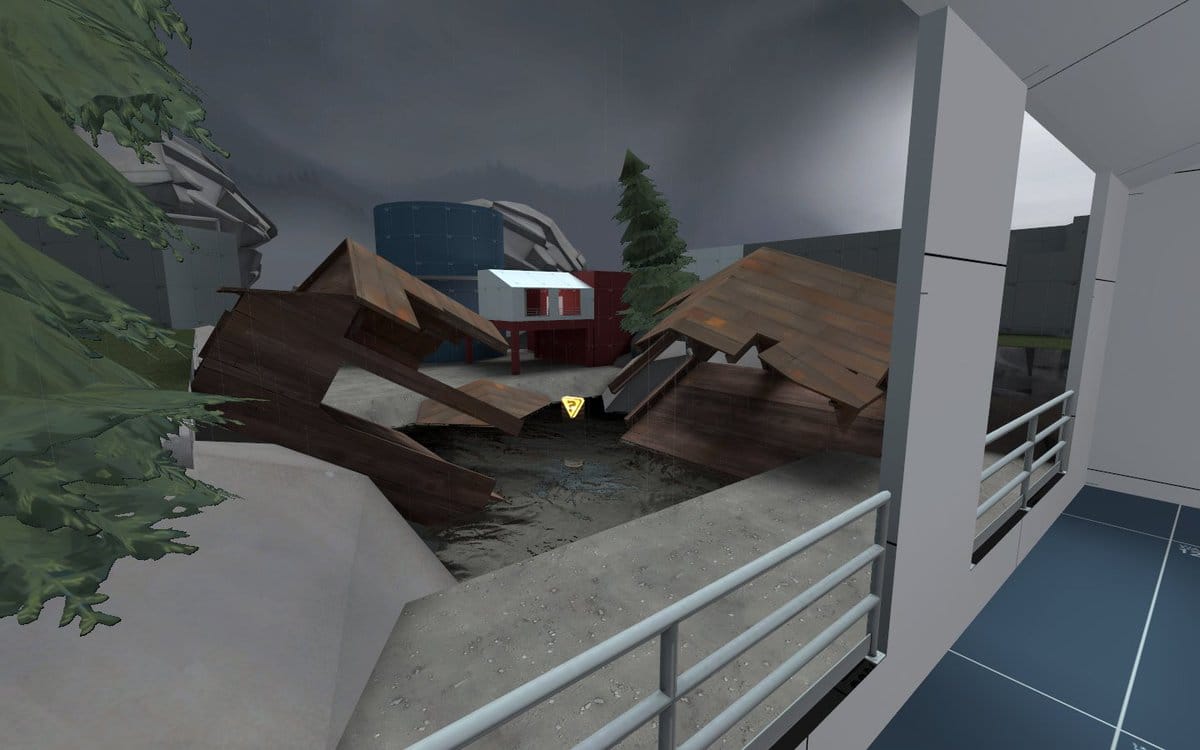
There’s not too much else to say about this one. I had a full blocked out map, but never got around to actually submitting it or even playing on it. My heart just wasn’t in this one it seems.
pl_carapace [2020]
3 years later and after 5 months of COVID lockdown, I have an itch for another 72 Hour Mapping jam. This one returned to the more appropriate start time for me of 7pm and I was coming in with a little bit of pre-production work already done.
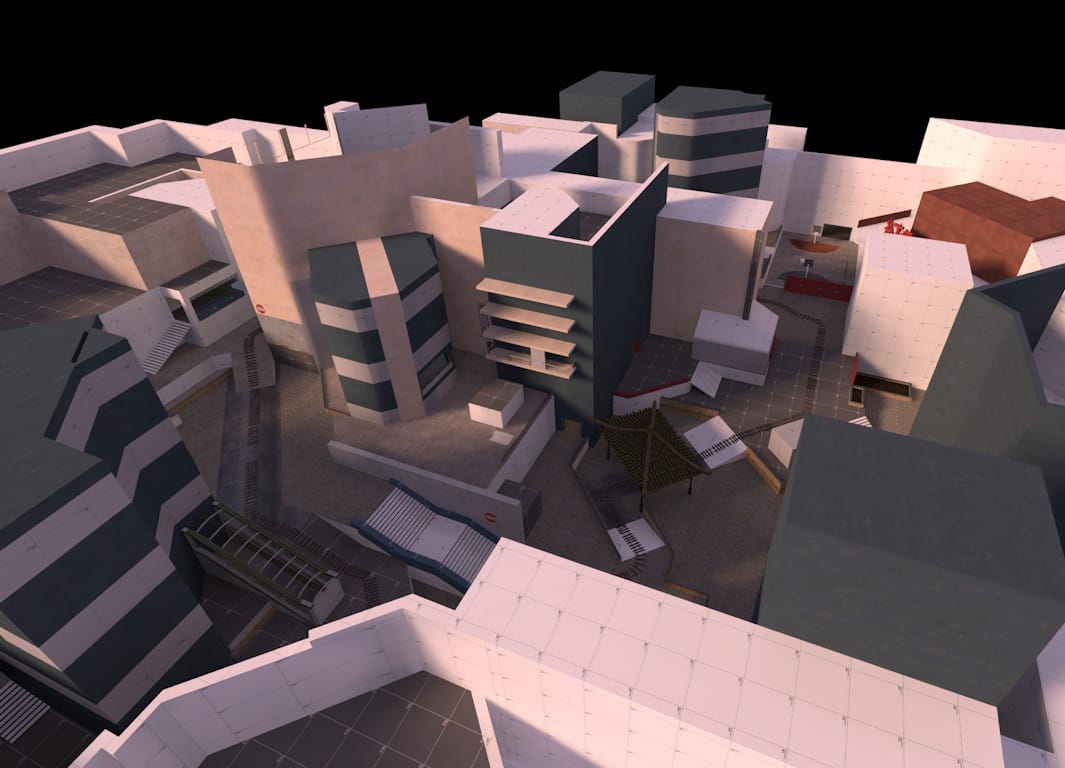
I wanted to make an urban map similar to koth_KongKing but with a payload game mode. This is a highly under utilised texture pack within the TF2 mapping community and one of my favourites. I had a rough paper layout and a collection of reference images to work with. I felt pumped! This was probably my most successful of the 72 hour jams I’ve done, as not only did I get a working level, I even managed to get a second iteration tested and committed.
Now, the final commit still wasn’t great; The urban them never actually made it anywhere into the build and there there were definitely some glaring issues with sightlines in the main area. The city felt a little nonsensical in layout and the scale of the map was still a little big. But overall a huge improvement on both the previous attempts I had made.
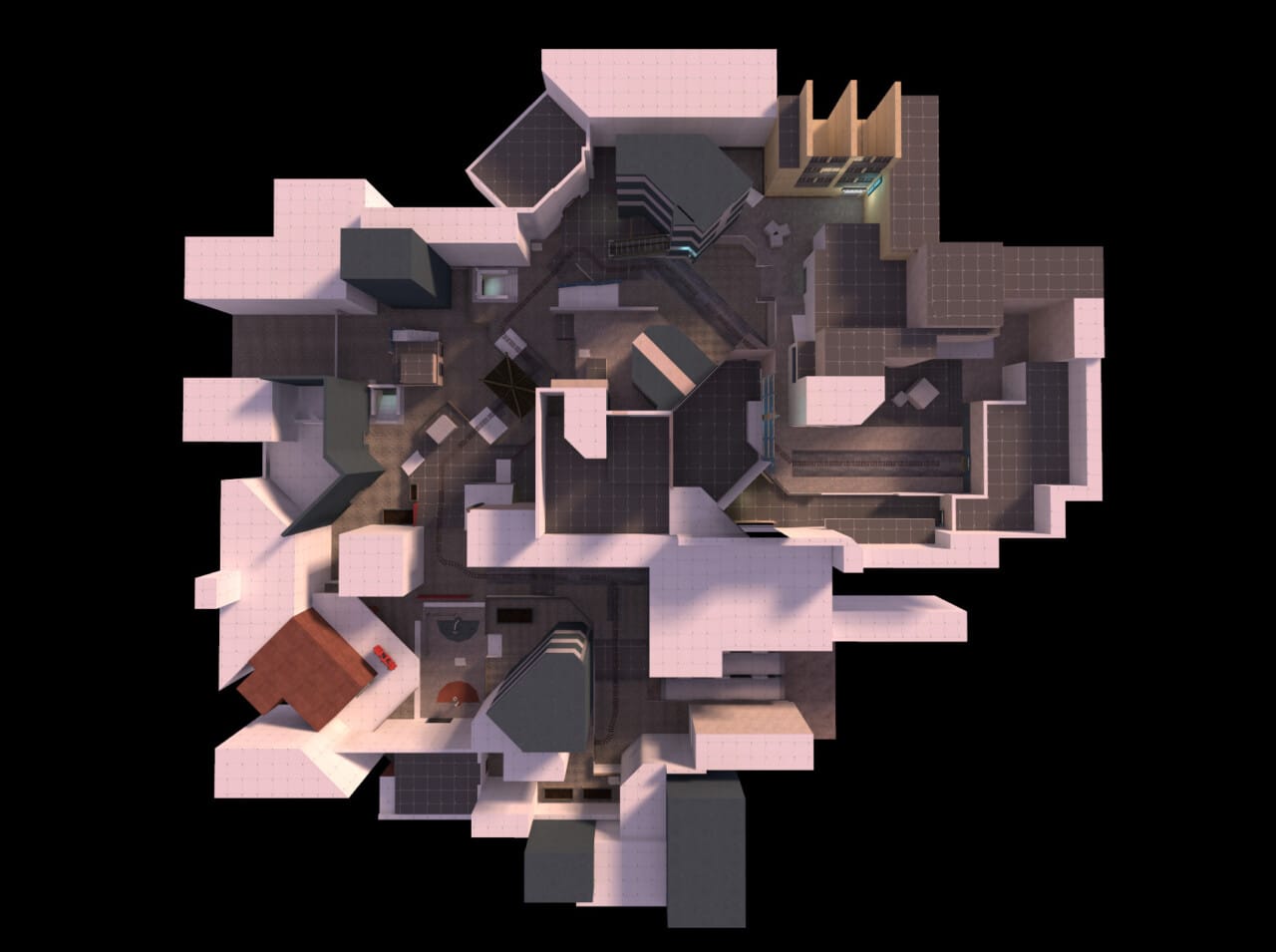
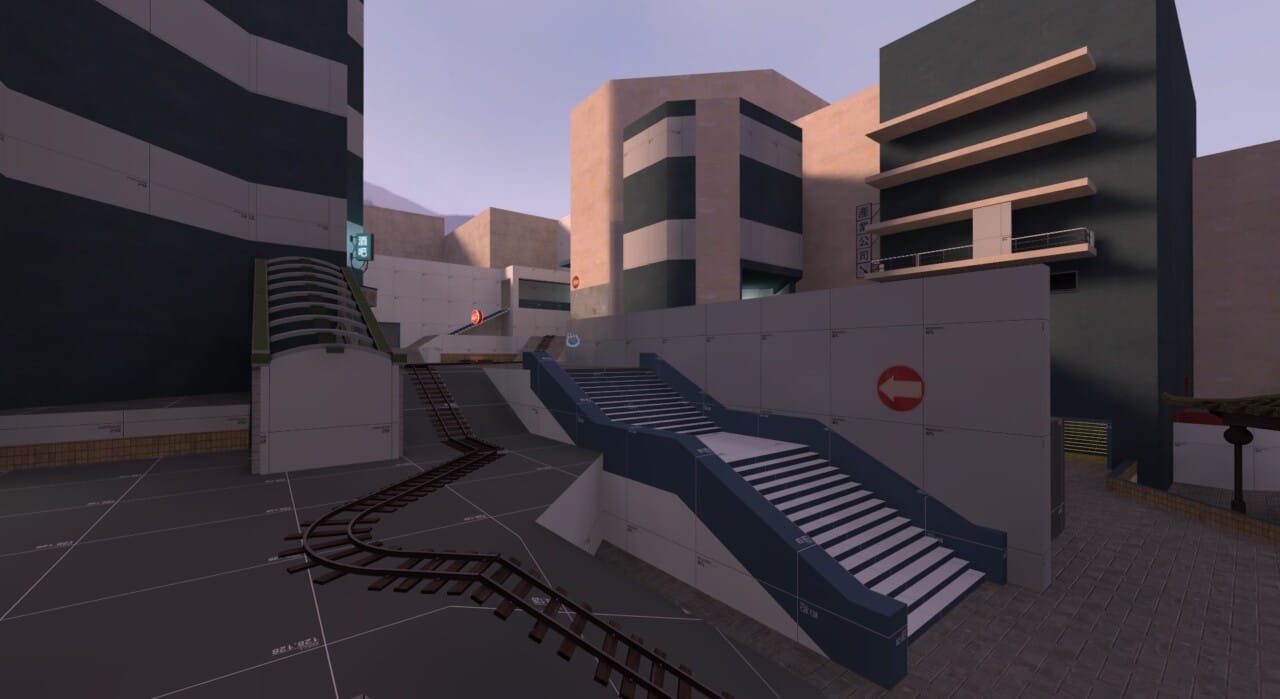

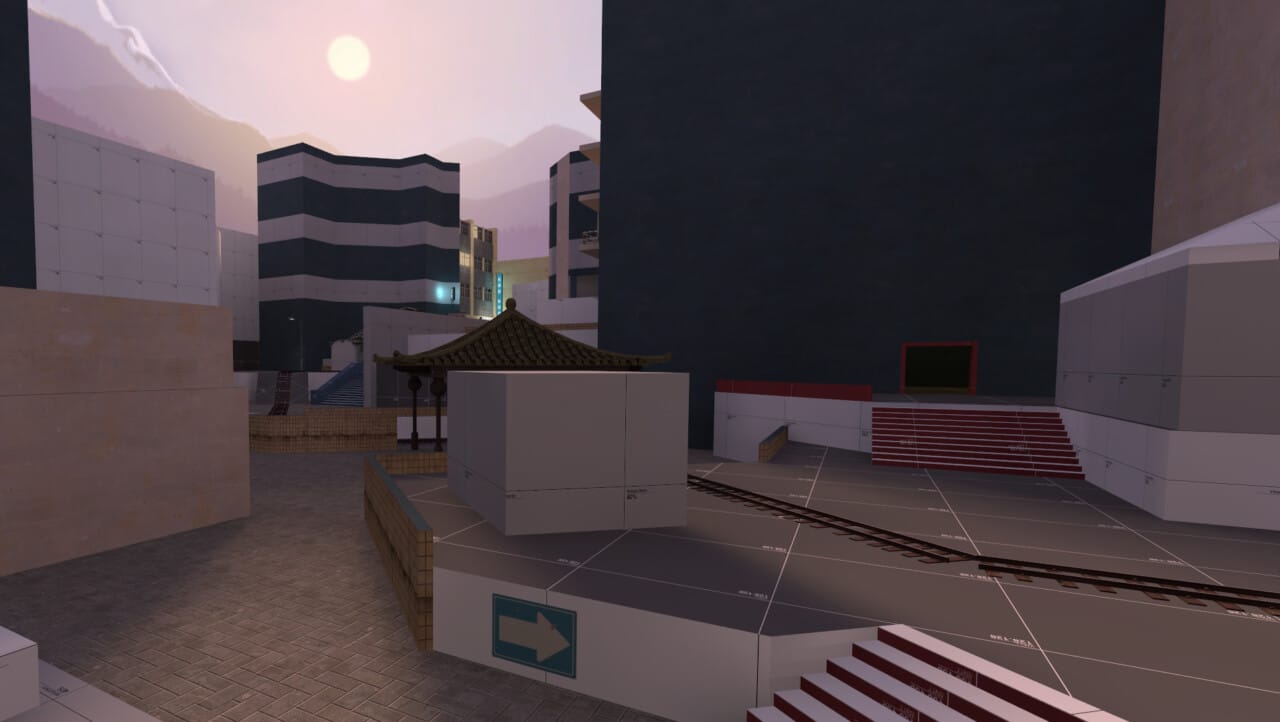
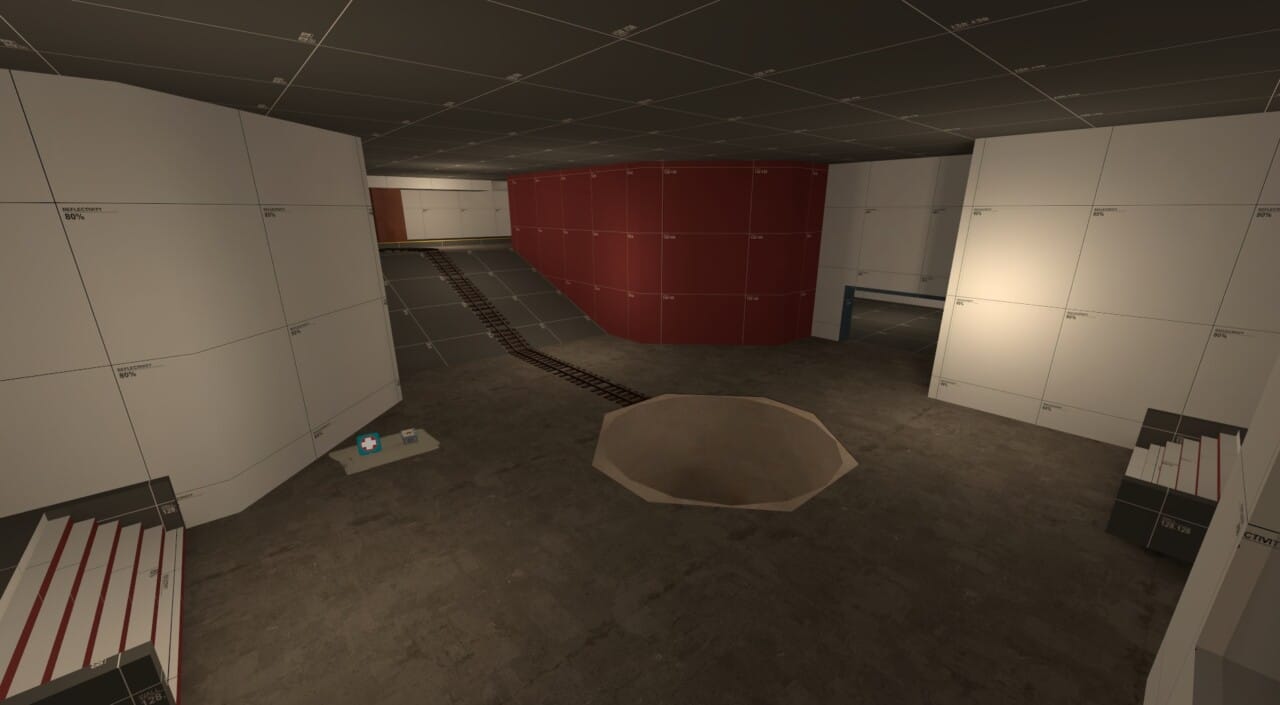
I still have the VMF file for this map, however I don’t see myself doing any further work to it. I would rather commit that time to working on a new urban map (but who knows what the future holds for this). You can download the latest BSP from TF2 maps.
cp_SaxtonsBooty
CP_SaxtonsBooty was a project started during the second COVID lockdown in 2020. The map started off as a King Of The Hill map with the hill being the inside of a giant skull cave. Players would approach from either side of the cave and would try to take control of the centre point inside of the skulls mouth. However this type of symmetry in the map design made some issues immediately apparent. In KOTH, designers want the fighting to occur around the Hill (hence the King Of The Hill). Once a team captures the point, they make a effort to fortify their position and then push the enemy team back towards their spawn, whilst the enemy team regains strength, builds up its ubers and prepares for a push on the main point.
When a team is approaching from the side of the Hill, this game plan isn’t quiet as applicable any more. Meaningless fighting occurs from either side and the Hill becomes something of an after thought. I could have found a way to edit the design of the map to make the theme work with the game mode, however after some rethinking, I changed it to a 2 point attack/defend game mode.

The theme of the map remained the same; A pirate shanty town, but now attackers would have to fight their way up through the town. The first point in the lower market place and the final point being inside the mouth of the skull cave. Elevation proved to be a big driving force behind the design as I wanted the attacking team to have a beautiful view of the city and the skull, as they were stormed their way up through the streets.
My partner at the time sculpted a wonderful skull to be used for the final point and the buildings were built to look like they were constructed from old ship parts. The whole aesthetic was everything I had wanted from the initial concept, however I was running into a number of design problems with this iteration as well. Certain classes in Team Fortress 2 really benefit from height advantage; namely the Soldier, Demoman and Sniper. The elevation would allow the defending team to rain down unimaginable chaos and spam from above. My initial way of solving this was to allow the attacking team to enter most of the houses on the way up.
Attackers could use the walls and ceilings of the buildings as cover for their attack. But this opened up the potential problem of players getting turned around and lost in the maze of the shanty town. I decided to leave that as a future problem to solve and push forward with the greybox, and after a couple of weeks the map really did feel like it was beginning to take shape.
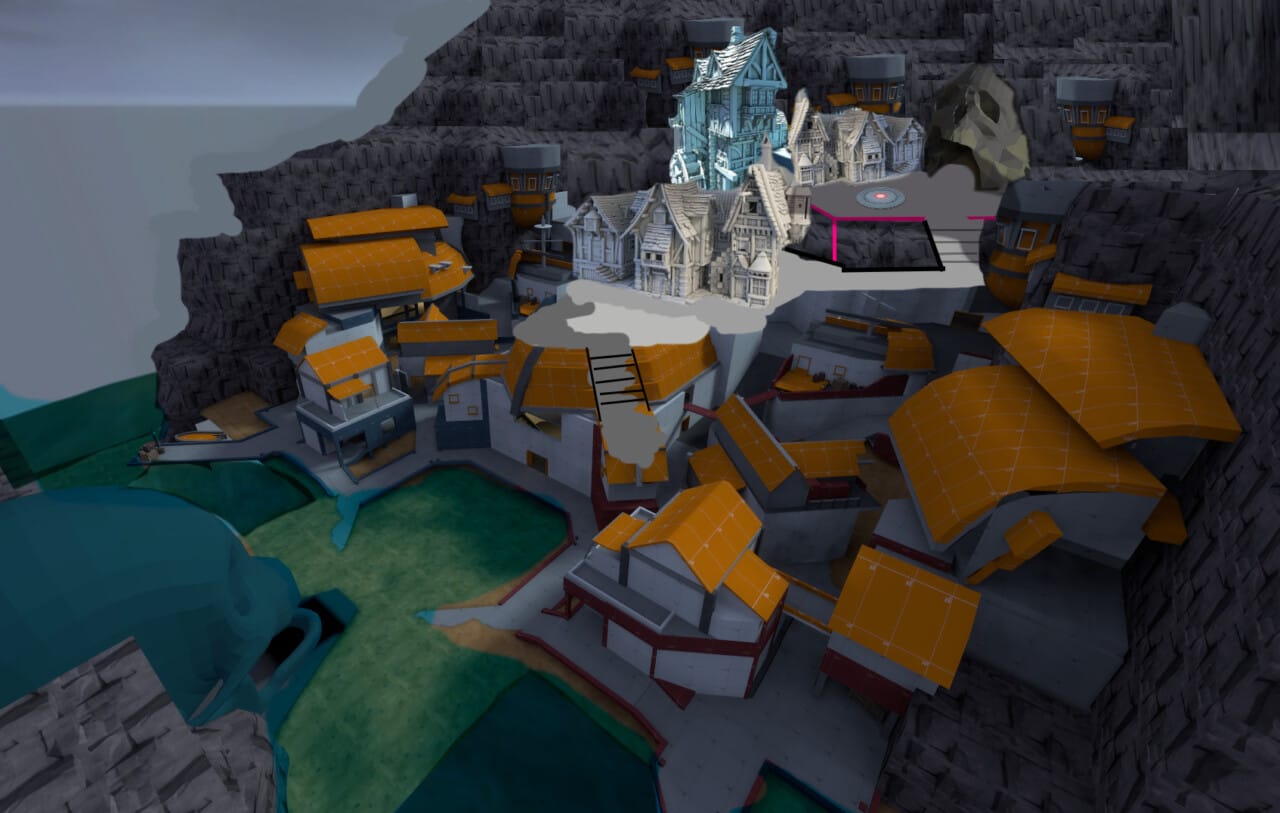
The rough concept of the changed map from KOTH to CP

I really wanted height to play a huge role in the map. This feeling of the shanty town towering down on the attackers
It ultimately would never make it to a playable state which is a shame, since I was extremely fond of the theme, atmosphere and the general direction it was taking. What’s worse is this is another VMF lost to the void. I’m certain there is backed up somewhere in a dropbox or USB stick. I would like to run around it again and see where work can be done to at least get it playable… perhaps a job for a rainy afternoon.
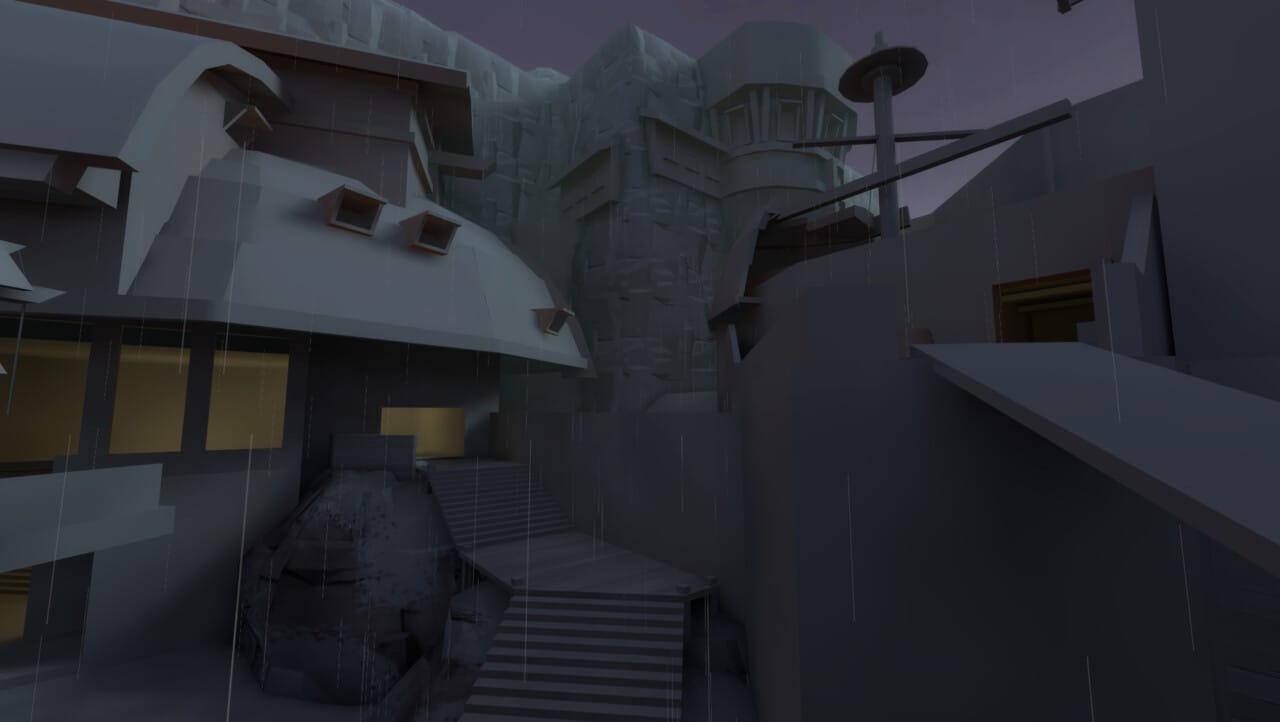

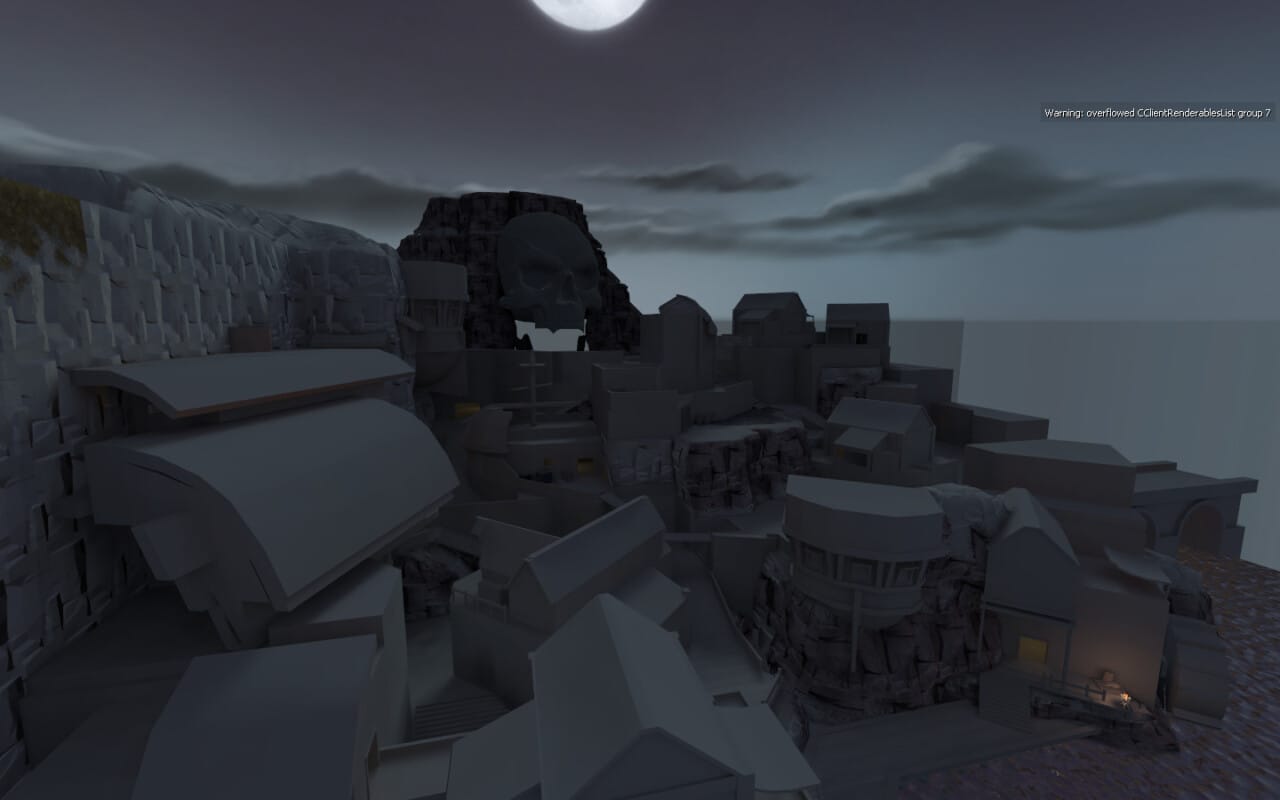
"Misc"
Abertay University Talk Level
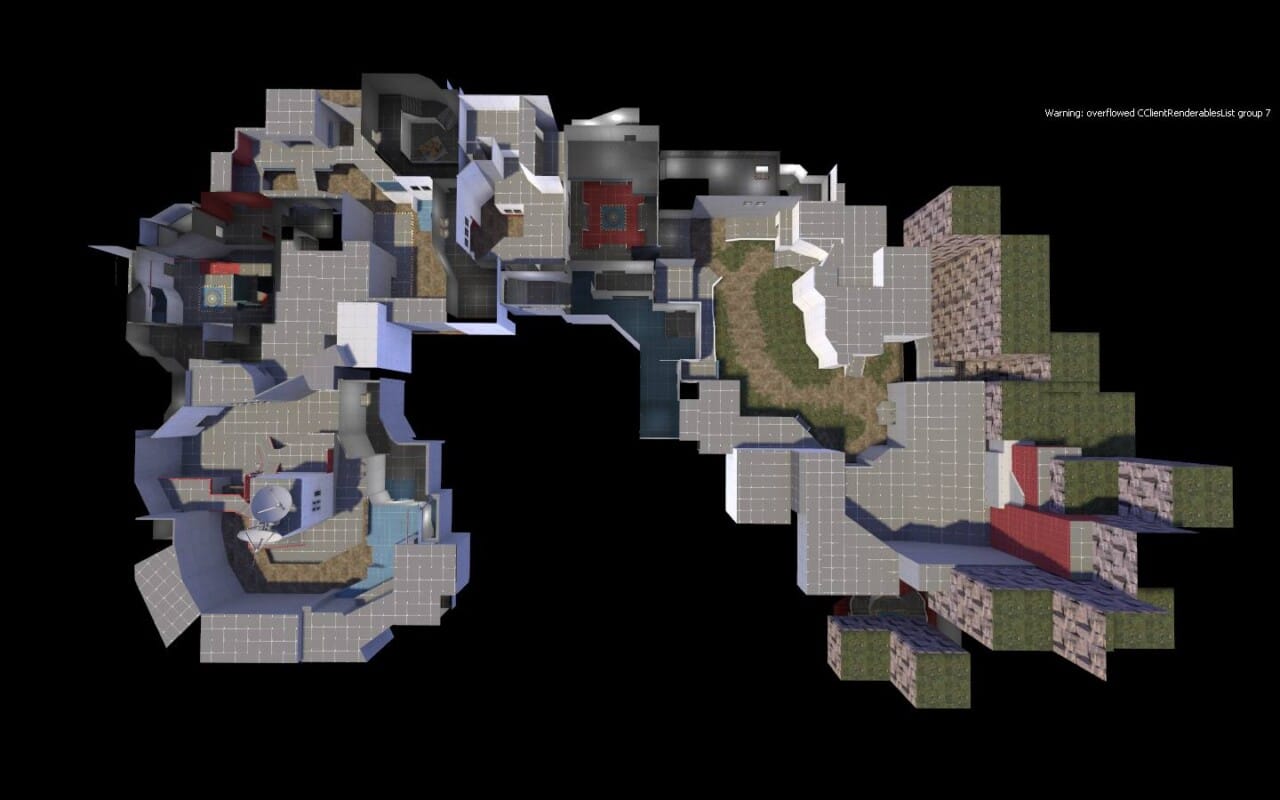
This was a quick level that I built along side talk I was preparing for students at my old university. I wanted to have the slides walk through the process of level design and show off images from a consistent project to back it up. I can’t find the slides or any of the other additional materials I used, and the map was never playable, but I still have screenshots saved in my google drive.
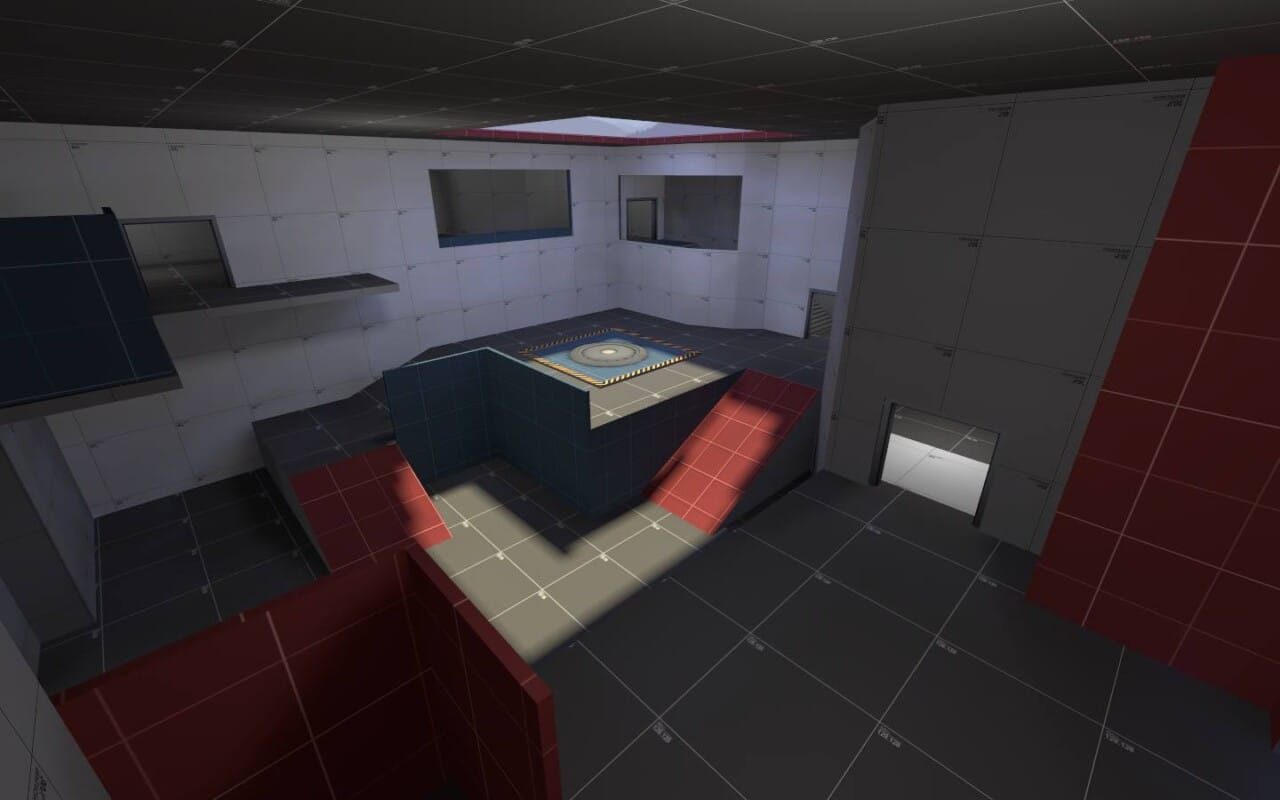
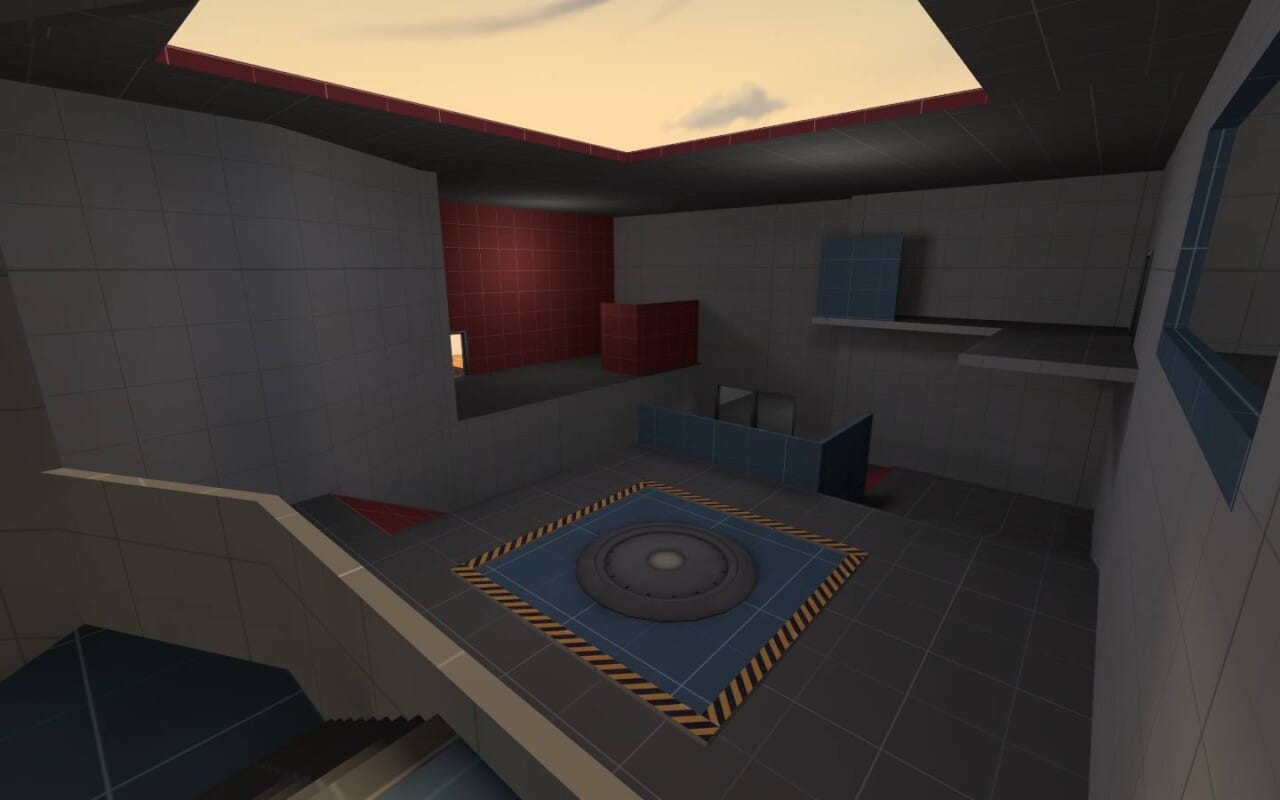
Day Of Infamy Train Station
Whilst at the EDGE indie festival in 2017, I had a chat with the New World Interactive dev team about their game Day Of Infamy. When I found out it was built in Source, I said I would have a little play around making a level. The general idea was to build most of the level inside a giant bombed out train station inspired by Grand Central Station in Manhattan and Antwerpen-Centraal station in Antwerp. I didn’t got too far with the project, but it was fun to chat with the devs (and I did get a free T-Shirt out of the whole exchange, so overall I consider that a win).
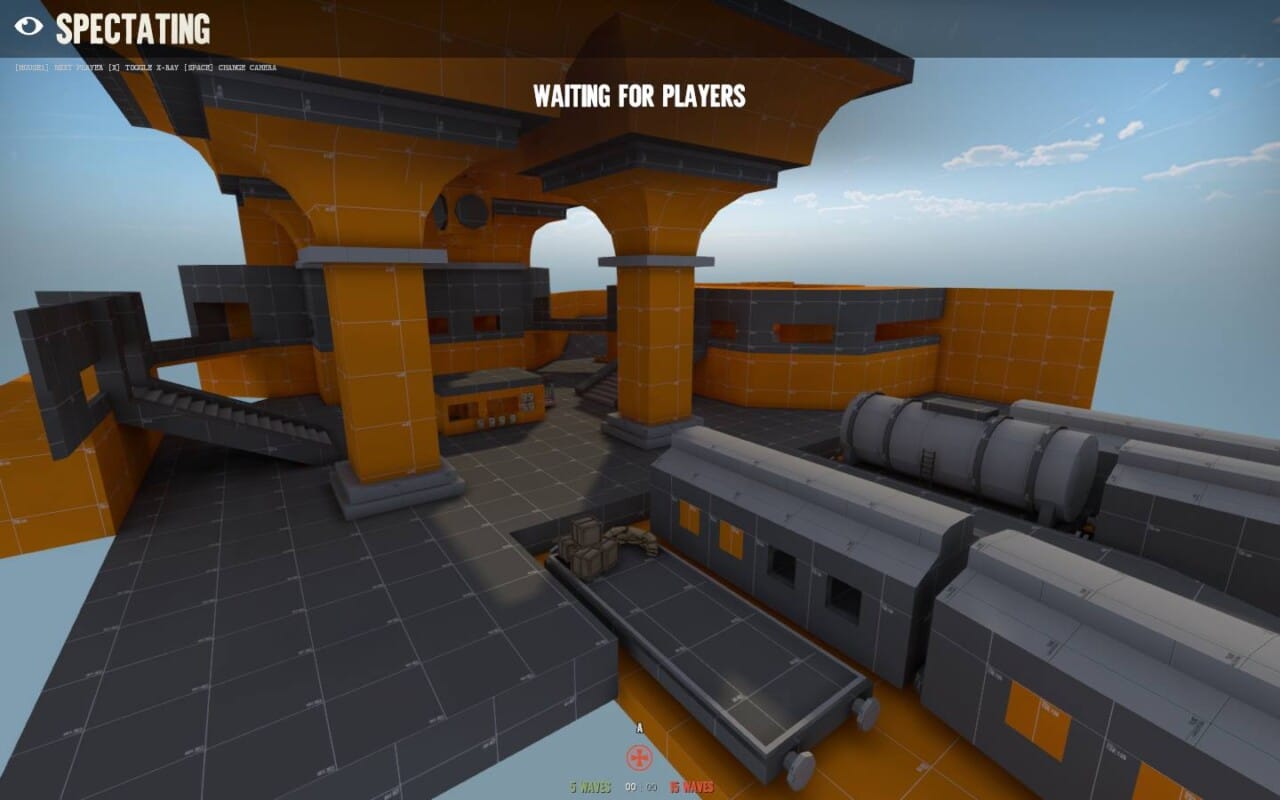
Doom + Prodeus
At some point over the last 3 or 4 years, I had a desire to work on some old school maps. This ranged from retro games (Doom and Half Life) to newer games styled on retro predecessors (Prodeus) to the downright weird (Daikatana). The Daikatana level never materialised (the level editor was as clunky and awkward as the actual game itself), but a few afternoons were spent messing around in various other engines.
Nothing tangible to show for these, except this neat little gif I found of an underground train level I made one afternoon in the Prodeus level editor.
And that’s it. This has been a dive into a number of the personal projects I started, and ultimately abandoned over the last decade of my life. I hope you’ve enjoyed this little trip down my memory lane as much as I have. Until next time!
